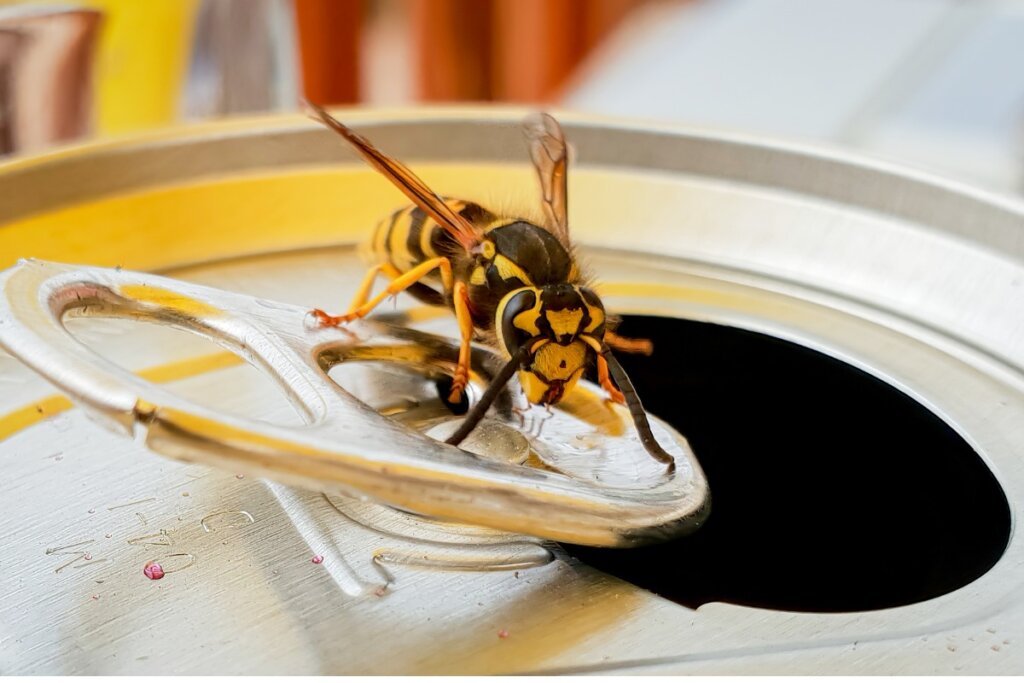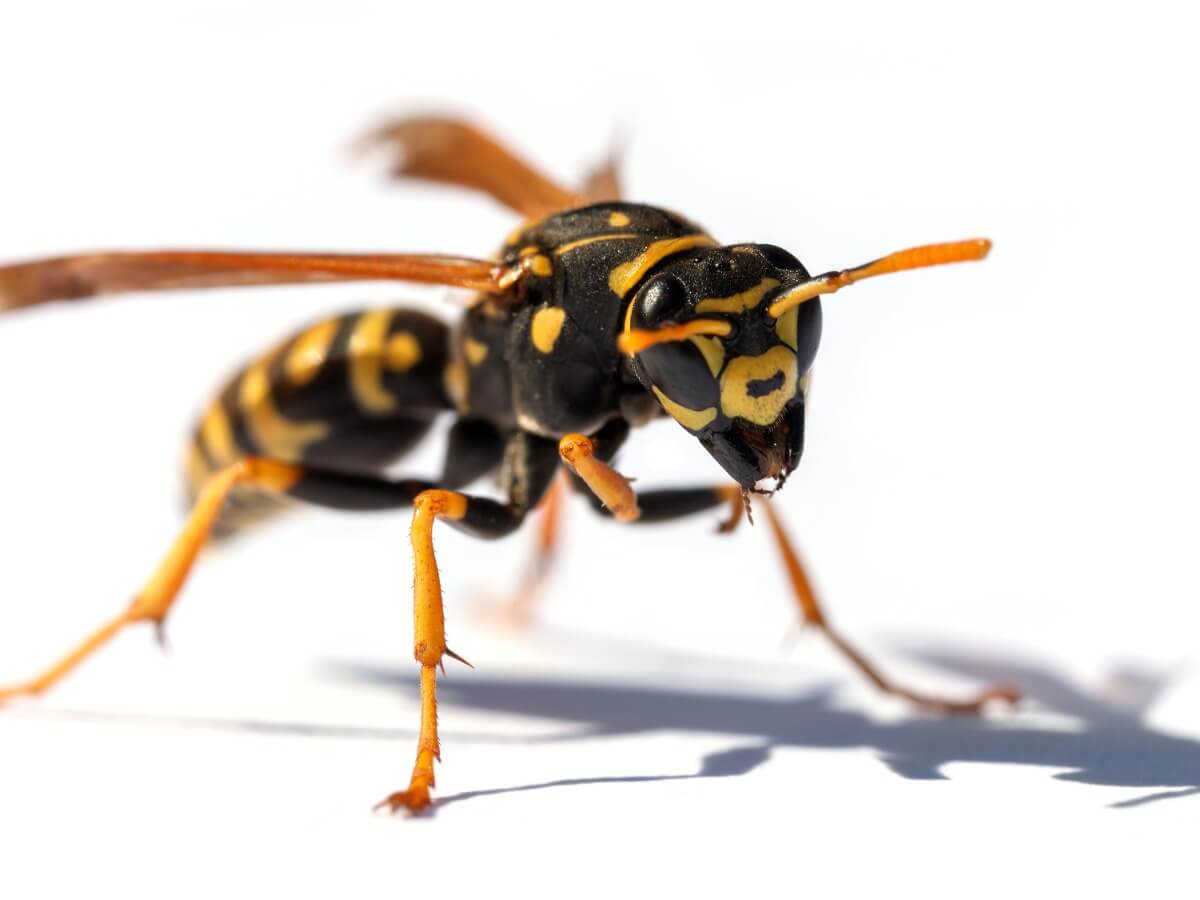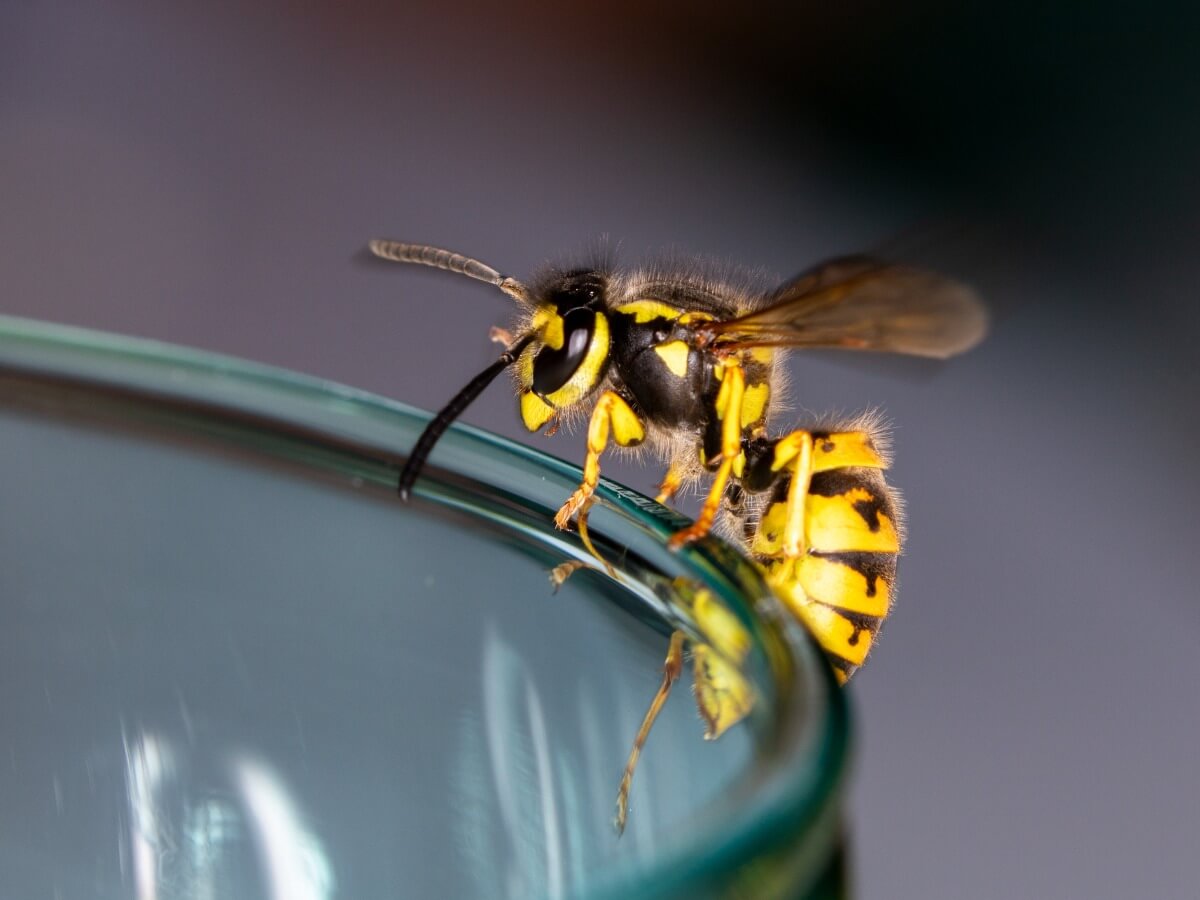What Do Wasps Eat?

These Hymenoptera are as feared for some as they are fascinating for others. Distinguishing them from other flying invertebrates, such as bees, can be difficult with the naked eye (or in full flight), but one of the big differences is in what wasps eat compared to other species.
In this article, you’ll be able to find the most well-known characteristics and types of wasps, although we’ll place special emphasis on their diet. As is often the case with insects like them, knowing them better means fearing them less. If you actually like watching wasps hover over your food, here are more reasons to love them.
Characteristics of wasps
Wasps are insects that belong to the Hymenoptera order and the Apocrita suborder. Their bodies are divided into 3 sections: head, thorax, and abdomen. At the end of this last tagma they have a stinger that injects neurotoxic venom and causes a rapid immune response.
These insects can sting more than once, and their venom contains a pheromone that attracts other wasps. Its mechanism when it comes to stinging is different from a bee’s, as the latter lose part of their body with the sting and die after the attack. Instead, wasps can return safely to their nest.
The distribution of insects of the Vespidae family covers almost the entire world, both in natural areas and in cities. They tend to prefer warm and temperate environments, because, with the arrival of the cold season, they either die or hibernate.
Many of the wasp species are eusocial, that is, they live in nests in which tasks are divided and a queen is in charge of reproduction. Others are solitary and disintegrated populations that are made up of fertile females that can reproduce without creating colonies, such as the cardboard wasp (Polistes dominula).
Yellow jackets’ nests are made of cellulose, unlike bees’, which are made of wax. This is why it’s incorrect to say “wasp hives”.

Types of wasps
There are many species of wasps around the world. However, the most numerous and easy to see in human-occupied environments are the following:
- Common wasp (Vespula vulgaris): This species is easily distinguished by its black body with yellow spots. It lives in trees and shrubs, but in urban environments, it prefers walls and corners of houses. It’s eusocial and creates nests.
- Asian wasp (Vespa velutina): It’s large, and can reach 3.5 centimeters in length. Its body is black on the abdomen, but the legs are yellow. It has been introduced in several European countries as an invasive species and its sting is dangerous due to the large amount of venom it injects.
- Paper wasp (Polistes dominula): It’s easily recognizable by its long hind legs, which hang down when it flies. It’s solitary and makes cellulose nests in which it lays its eggs, hence its name.
- German wasp (Vespula germanica): Despite its name, it’s a species native to Africa that spread to the rest of the world. It’s totally black except for the abdomen and legs, which are yellow.
- Hornet (Vespa crabro): This is a large species, as the workers can reach 25 millimeters in length. They’re more of an orange color and their wings are reddish. Despite their intimidating appearance, they’re more peaceful than smaller species and only attack to defend the nest or themselves.
Now that you know more about the different types, you can find out what wasps eat. Although it’s easy to see them hanging around fruit that’s fallen from the trees or leftovers from picnics, it’s a somewhat more complex matter than it appears at first. Let’s look at it in a bit more detail.
What do wasps eat?
The species and stage of life are two aspects to take into account when it comes to knowing what wasps eat. Adult specimens are generally omnivores and feed on fallen fruit, other insects, and even carrion. The solitary wasps that have to feed their larvae tend to have a more predatory-oriented behavior, as they hunt small insects for their offspring.
In other words, wasp larvae require protein material to grow and develop, as they need to pupate and become functional adults. For this reason, it’s normal to see winged specimens biting off pieces of meat or dead insects and taking them to the nest. Due to their predatory nature, they’re excellent pest controllers.
On the other hand, there are parasitoid wasp species that lay their eggs inside other insects, so that the larvae can feed on them when they hatch. A curious case of this type of reproduction is the emerald wasp (Ampulex compressa), which “zombifies” the cockroaches with its venom to guide them to a safe place for the larvae to eat when they hatch.
Many species of the genus Vespula have an inestimable value for the ecosystem, as they also feed on nectar. When they perch on flowers to feed, they’re fulfilling a pollination function. However, they do this less than bees, as having a less “hairy” body makes it more difficult for pollen to adhere to them.
Parasitoid wasps are considered a sophisticated way to control worm pests and other folivorous insects on crops.

Wasp stings are annoying and painful at best. Therefore, the best way to avoid annoyances without having to kill them (given their role in the environment) is to stay protected with repellants and preparing your home so that they can’t nest there. And, fortunately, you don’t have to get close to these insects in order to find out all these fascinating characteristics.
All cited sources were thoroughly reviewed by our team to ensure their quality, reliability, currency, and validity. The bibliography of this article was considered reliable and of academic or scientific accuracy.
- Hunt, J. H., Brown, P. A., Sago, K. M., & Kerker, J. A. (1991). Vespid wasps eat pollen (Hymenoptera: Vespidae). Journal of the Kansas Entomological Society, 127-130.
- Pérez-Lachaud, G., Batchelor, T. P., & Hardy, I. C. (2004). Wasp eat wasp: facultative hyperparasitism and intra-guild predation by bethylid wasps. Biological Control, 30(2), 149-155.
- Wasp, Y. J. Do Wasps Make Honey? 5 Interesting Ways Wasps Eat.
- Piek, T., Visser, J. H., & Veenendaal, R. L. (1984). Change in behaviour of the cockroach, Periplaneta americana, after being stung by the sphecid wasp Ampulex compressa. Entomologia Experimentalis et Applicata, 35(2), 195-203.
- Castro, L. (1997). Familia Vespidae: subfamilia Eumeninae. Catalogus de la entomofauna aragonesa, (16), 3-8.